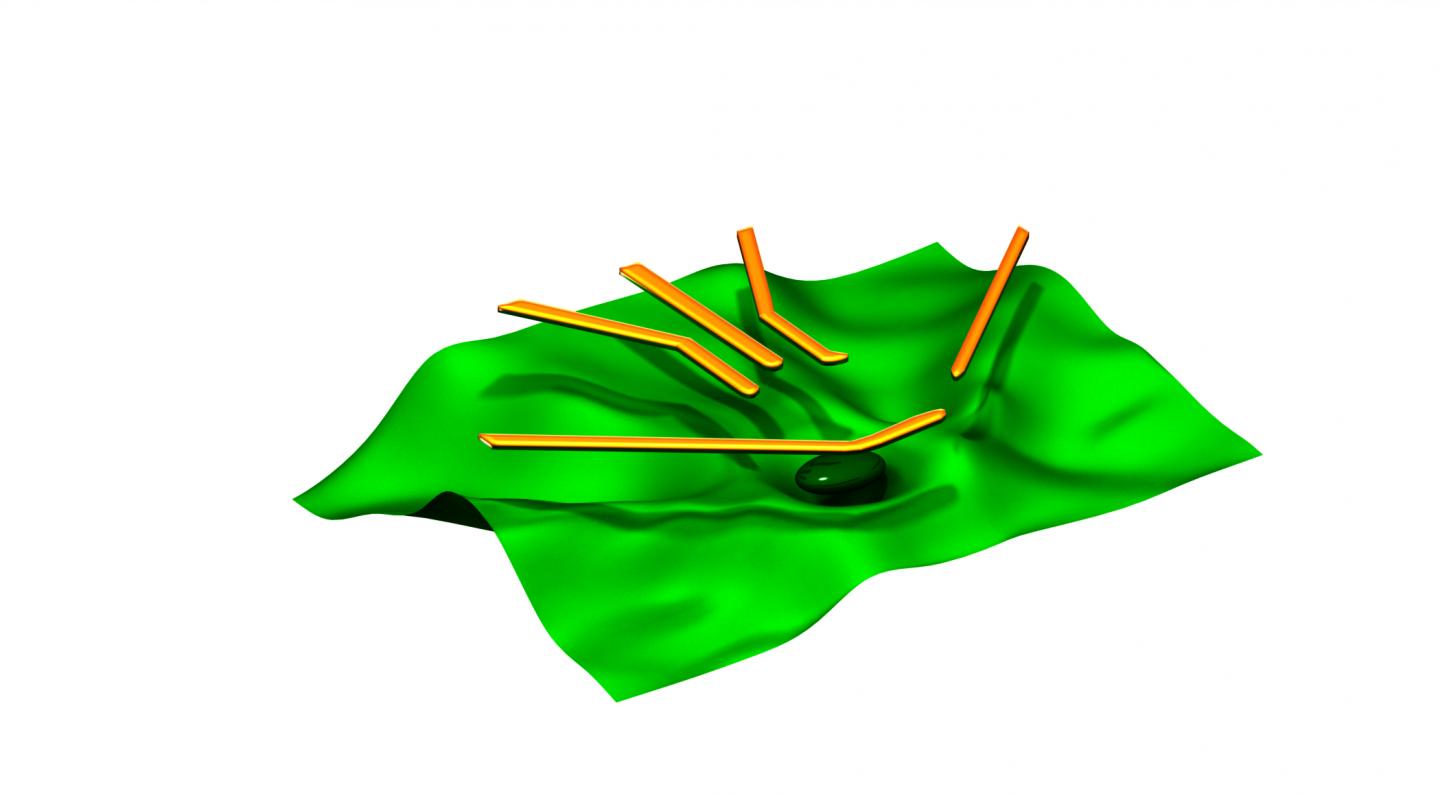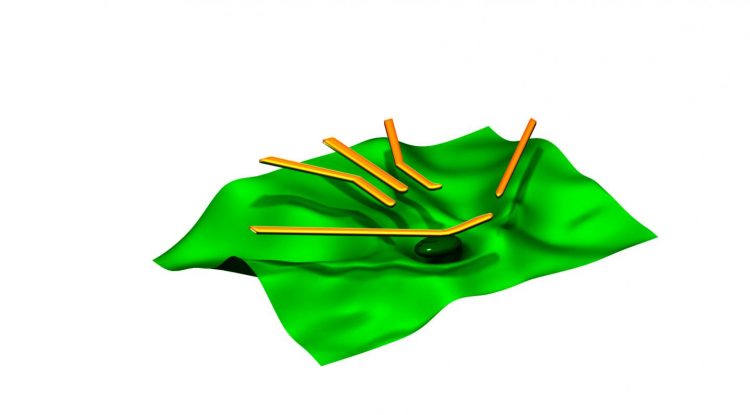
Credit: Department of Physics, University of Basel
For several years, the electron spin of individual electrons in a quantum dot has been identified as an ideal candidate for the smallest information unit in a quantum computer, otherwise known as a qubit.
Controlled via applied voltages
In quantum dots made of layered semiconductor materials, individual electrons are caught in a trap, so to speak. Their spins can be determined reliably and switched quickly, with researchers keeping the electrons under control by applying voltages to the various nanostructures within the trap. Among other things, this allows them to control how many electrons enter the quantum dot from a reservoir via tunneling effects. Here, even small changes in voltage have a considerable influence on the electrons.
For each quantum dot, the applied voltages must therefore be tuned carefully in order to achieve the optimum conditions. When several quantum dots are combined to scale the device up to a large number of qubits, this tuning process becomes enormously time-consuming because the semiconductor quantum dots are not completely identical and must each be characterized individually.
Automation thanks to machine learning
Now, scientists from the Universities of Oxford, Basel, and Lancaster have developed an algorithm that can help to automate this process. Their machine-learning approach reduces the measuring time and the number of measurements by a factor of approximately four in comparison with conventional data acquisition.
First, the scientists train the machine with data on the current flowing through the quantum dot at different voltages. Like facial recognition technology, the software gradually learns where further measurements are needed with a view to achieving the maximum information gain. The system then performs these measurements and repeats the process until effective characterization is achieved according to predefined criteria and the quantum dot can be used as a qubit.
“For the first time, we’ve applied machine learning to perform efficient measurements in gallium arsenide quantum dots, thereby allowing for the characterization of large arrays of quantum devices,” says Dr. Natalia Ares from the University of Oxford. “The next step at our laboratory is now to apply the software to semiconductor quantum dots made of other materials that are better suited to the development of a quantum computer,” adds Professor Dr. Dominik Zumbühl from the Department of Physics and the Swiss Nanoscience Institute at the University of Basel. “With this work, we’ve made a key contribution that will pave the way for large-scale qubit architectures.”
###
Original source:
Efficiently measuring a quantum device using machine learning
D.T. Lennon, H. Moony, L.C. Camenzind, Liuqi Yu, D.M. Zumbuhl, G.A.D. Briggs, M.A. Osborne, E.A. Laird, and N. Ares
npj Quantum Information, doi: 10.1038/s41534-019-0193-4
Further information:
Dr. Natalia Ares
Materials Department, Oxford University
16 Parks Road
Oxford, OX1 3PH, UK
Tel: +44 (0)1865 273719
[email protected]
https:/
Prof. Dr. Dominik M. Zumbühl
Department of Physics, University of Basel
Klingelbergstrasse 82
4056 Basel, Switzerland
T +41 (0)61 207 36 93
[email protected]
http://ZumbuhlLab.
Dr. Edward Laird
Department of Physics, Lancaster University
Office: A051, A – Floor, Physics Building
Lancaster LA1 4YB, UK
Tel: +44 (0)1524 510831
[email protected]
http://wp.
Media Contact
Dr. Dominik M. Zumbühl
[email protected]
Related Journal Article
http://dx.





